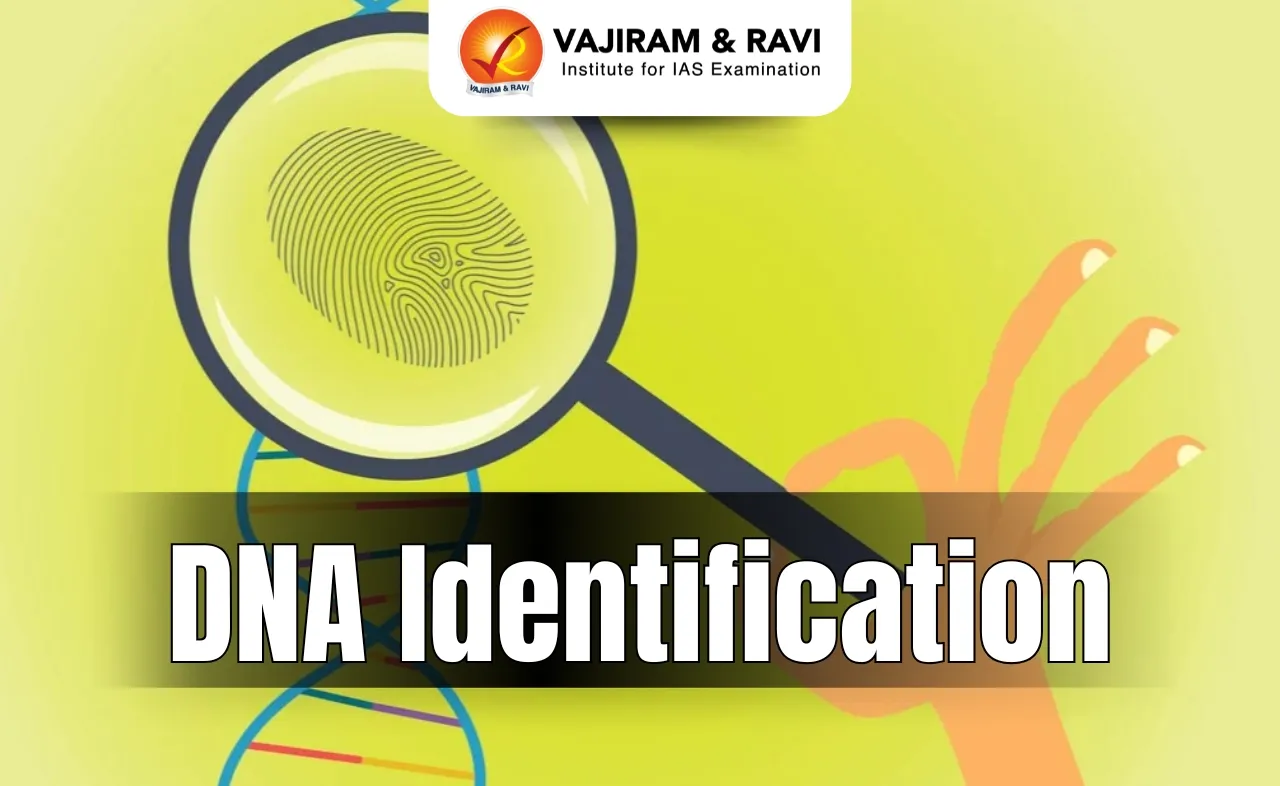DNA Identification Latest News
After the Air India Boeing 787 Dreamliner crash in Ahmedabad, authorities are using DNA analysis to identify the remains of those killed in the accident.
About DNA Identification
- It is the gold standard for identifying human remains, especially after mass fatality events in which bodies might not be easy to identify otherwise.
Collection and Storing Samples of DNA
- As soon as an individual dies, their DNA begins to degrade.
- DNA survives much better in cold and dry conditions, than when it is hot and humid. Once collected, stored in as cool and dry an environment as possible.
- DNA samples should be frozen at minus 20 degrees Celsius, or, in the case of soft tissues (skin, muscles, etc.), they may be stored in 95% ethanol.
- DNA from soft tissues degrades much faster than that from hard tissues (bones and teeth).
- This is because cells in hard tissues are largely protected from the effects of putrefaction and decomposition.
Methods to Analyse DNA Samples
Short Tandem Repeat (STR) Analysis
- It evaluates short tandem repeats, which are essentially short repeating sequences of DNA.
- STRs are used for DNA identification as they widely vary between individuals. “After analysing 15 or more of these hyper-variable regions of DNA… the resulting profile can be used to ascertain family relationships with a high degree of confidence,
- STRs are typically found on nuclear DNA which is located within the nucleus of a cell.
- Therefore, to carry out STR analysis it is essential that the nuclear DNA extracted from the sample is not degraded.
Mitochondrial DNA (mtDNA) Analysis
- It is used when nuclear DNA is degraded or unavailable.
- Mitochondrial DNA is found within the cell’s energy-producing organelles known as mitochondria.
- As mtDNA is present in multiple copies within the cell, it is easier to recover from human remains that are not well preserved.
- This is used for identification because mtDNA is passed down by the mother, unchanged, to all her children.
- This means that samples from a person’s remains can be matched with reference samples from their mother, maternal grandmother, sibling, maternal aunts or uncles, and distant relatives as long as they belong to the maternal line of inheritance.
Y Chromosome Analysis
- Humans have two types of sex chromosomes, X and Y: biological males typically have one X and one Y chromosome, and biological females typically have two X chromosomes.
- In this method, a panel of STR on Y chromosomes, passed on from father to son, is examined to match the remains of the victim with their male relatives.
- “This can be useful when close relatives are not available for comparison: any member of the paternal line, including brothers, paternal uncles, and paternal male cousins, may be used for matching,”
Single Nucleotide Polymorphisms (SNPs) Analysis
- It is used when the DNA to be analysed is highly degraded.
- A SNP is a variation in the DNA sequence where a single base — A, C, G, or T — at a specific location differs among people.
- Given that SNPs are unique to each person, they can be used for identification purposes with the help of reference samples taken from the victim’s personal belongings such as a toothbrush and hairbrush.
Source: IE
Last updated on December, 2025
→ Check out the latest UPSC Syllabus 2026 here.
→ Join Vajiram & Ravi’s Interview Guidance Programme for expert help to crack your final UPSC stage.
→ UPSC Mains Result 2025 is now out.
→ UPSC Notification 2026 is scheduled to be released on January 14, 2026.
→ UPSC Calendar 2026 is released on 15th May, 2025.
→ The UPSC Vacancy 2025 were released 1129, out of which 979 were for UPSC CSE and remaining 150 are for UPSC IFoS.
→ UPSC Prelims 2026 will be conducted on 24th May, 2026 & UPSC Mains 2026 will be conducted on 21st August 2026.
→ The UPSC Selection Process is of 3 stages-Prelims, Mains and Interview.
→ UPSC Result 2024 is released with latest UPSC Marksheet 2024. Check Now!
→ UPSC Prelims Result 2025 is out now for the CSE held on 25 May 2025.
→ UPSC Toppers List 2024 is released now. Shakti Dubey is UPSC AIR 1 2024 Topper.
→ UPSC Prelims Question Paper 2025 and Unofficial Prelims Answer Key 2025 are available now.
→ UPSC Mains Question Paper 2025 is out for Essay, GS 1, 2, 3 & GS 4.
→ UPSC Mains Indian Language Question Paper 2025 is now out.
→ UPSC Mains Optional Question Paper 2025 is now out.
→ Also check Best IAS Coaching in Delhi
DNA Identification FAQs
Q1. Where is DNA found?+
Q2. What is the method of DNA identification?+
Tags: dna identification prelims pointers upsc current affairs upsc prelims current affairs

















